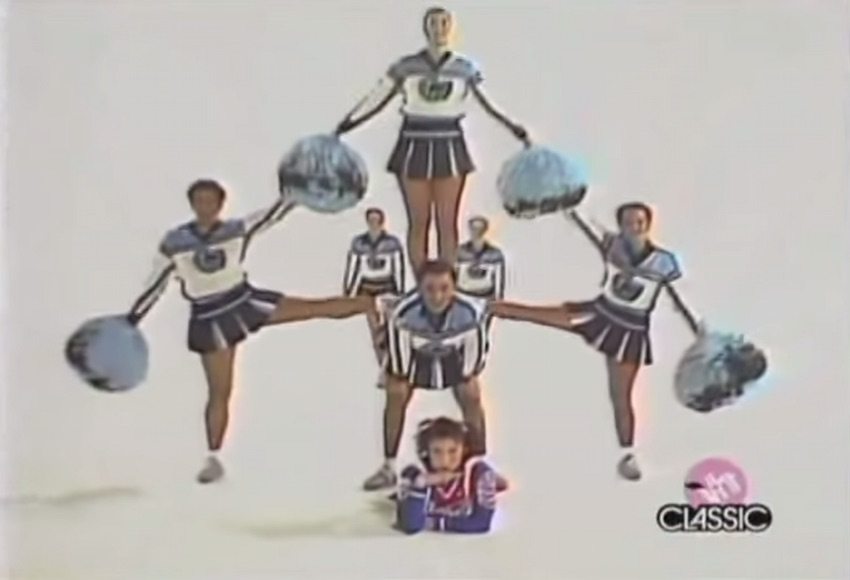Learning common beats is a lot like learning the ABCs of music. Learn how to recognize common rhythmic patterns for popular musical styles like rock, pop, jazz, and Latin music, and play back these rhythms using your listening skills with the easy examples below. Combining notation knowledge with ear training will help you develop strong musical rhythm skills.
Common Beats You Should Know
Below are common rhythmic patterns that you can learn for your instrument. If you need a refresher on basic music notation, check out the resources below or check out Get Rhythm: Notate It. While these examples are based on common drum set rhythms, you can apply most of these rhythms to other instruments and vocals.
For each rhythm example, practice ear training by:
- Listen to the rhythm
- Follow the rhythm notation
- Count out the basic pulse (“1, 2, 3, 4”)
- Clap or tap the rhythm
- Play on your instrument or sing along on neutral syllables
Classic Rock Beat
While modern rock variations are more likely to include double bass pedals, extreme syncopation, and dizzying coordination between limbs, learning this basic pattern can help you with any instrument, most notably percussion, piano, bass, and any rhythm section instrument, which often holds the band together. If you are a vocalist or lead instrumentalist, it can help to know these basic patterns to develop a strong sense of pulse and the downbeat during your melody or solo.
Example 1: Basic Bass Drum (or Bass Rhythm) Pattern
This basic pattern is often played in the bass drum, the lowest synth, the bass, or in the left hand of the piano part.
To complete this pattern for a drum set, you will often hear claps/tambourine/snare on beats 2 and 4 and a steady 8th note or 16th note rhythm in the high hat (sometimes doubled in maracas or other percussion instruments, a variation on guitar, or a higher synth/piano part). Practice counting this rhythm and play along to gain a strong sense of beats 2 and 4. For variation, quarter notes, 8th notes, and 16th note patterns are played on beats 2 and 4. Try practicing clapping on beats 2 and 4 first, then practice these variation rhythms.
This is the entire classic rock pattern with bass drum, snare drum, and high hat playing simple 8th note patterns. The three patterns are notated below. While in regular sheet music, the pattern would be consolidated into one staff, or even notated “Rock Style” slashed measures, the patterns in this example have been separated to help you read the notes easier.
You can find this pattern and variations of this simple classic rock pattern in both pop and rock music today and from the past.
Classic 80s pop pattern by Toni Basil: Mickey (Director’s Cut)
Now that you probably can sing this pattern in your sleep, use your ear training skills to pick out similar rhythms in other modern songs like this. Listen to Robin Thicke’s “Blurred Lines” and notice how the simple bass drum pattern hits primarily on beats 1 and 3 and how several percussion instruments play along on beats 2 and 4, with a syncopated version of the straight 8ths.
Variation on classic rock/pop pattern by Robin Thicke: Blurred Lines
More Complex Variation of the Classic Rock Pattern
You can use your ear training skills to hear an even more complex variation of the classic rock pattern in the chorus of Bastille’s Pompeii.
More Examples
Below are some other common rhythms in jazz and dance, with modern examples of them in use. You will soon start noticing that mainstream music often follows the same rhythmic patterns, with minimal changes like adding in extra beats, omitting beats, or incorporating syncopation. With the globalization of the music industry, many complex rhythmic patterns from like Afro-Cuban music and Indian Classical music have added rhythmic flair to otherwise predictable rhythmic patterns.
Basic Jazz Swing Beat
In jazz, the 8ths notes do not have a steady rhythmic pattern. Instead, they have a swinging 8th note rhythm that sounds more like triplet rhythms than simple 8th note or 16th note patterns. The notation is often still looks like standard music, but the notes are “swung”.
In the following musical example, you can hear the bass playing straight quarter notes, the drummer playing a swinging 8th note rhythm on the cymbals, and the pianist jamming out over the rhythms.
Basic Dance Music
From Disco to Techno, dance beats are pretty standard, with a solid pounding beat that moves you to dance. Listen to this simple example, clap along, then listen out for how this same beat is used across a variety of musical styles. Notice some of the subtle difference, like the high hat on the offbeat in disco or how music from multiple cultures adds syncopation to the rhythm.
Disco: The Trammps Disco Inferno
Dance: Bounce by Iggy Azalea
African/Dance Fusion: Shakira “Waka Waka” (This Time for Africa)
As you learn the basic rhythms, use your listening skills to guess the rhythms in your favorite tunes. We covered just a few basic rhythms in this article, but there are literally dozens of standard rhythms that you can learn!
Additional Rhythm Resources
- Theta Music Trainer: Rhythm Patterns
- Basic of Latin Drumming
- How to Practice Jazz Guitar Rhythms
- Drum Set Rhythmic Patterns
- Common Bass Guitar “Groove Skeletons”













